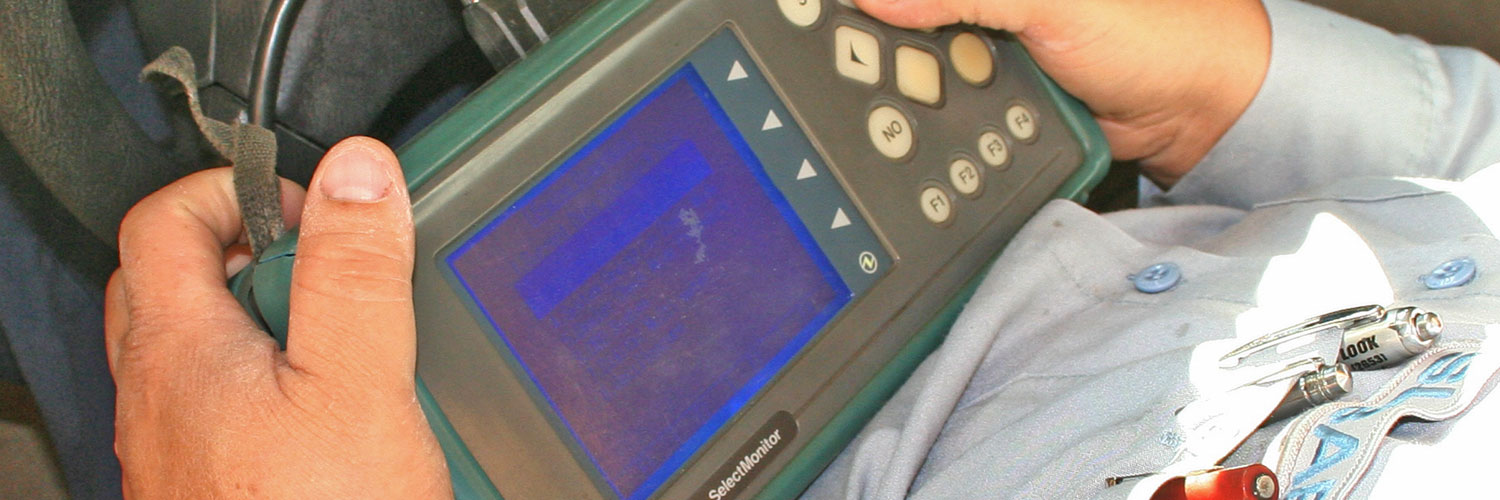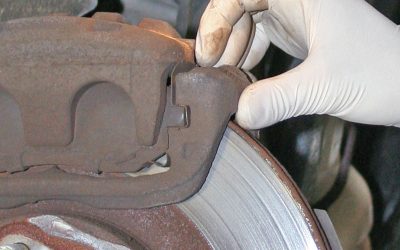Subaru rack and pinion steering systems are among the best in the industry, but even the best need routine maintenance and service to function at an optimum level.
Rack and pinion steering systems are extremely durable, but in order to function flawlessly for 100,000 miles or more, they require routine inspection, maintenance and occasional service.
The most common problems encountered with rack and pinion steering systems are leaks, fluid contamination and wear. Hoses and seals can leak, causing a loss of operating pressure and depriving moving parts of necessary lubrication. Hoses and seals can also break down and contaminate the fluid with bits of rubber, neoprene or other particles. Corroded or rusted parts can add bits of metallic particles to foul the system. Fluid contamination can also occur if moisture enters the system.
As the system grows older, the components may wear and deteriorate, affecting the operation. The contact area where the pinion meets the rack, for example, can become worn over years of operation and develop “center wear,†causing a loose play and a “wandering feel†in the steering, when driving straight forward.
Subaru Rack and Pinion Systems
All Subaru steering systems use a rack and pinion steering mechanism. As the steering wheel is turned, the pinion gear on the bottom end of the steering column rotates, proportionately moving the rack (and the wheels) left or right.
Rack and pinion steering is the choice of modern automakers because it gives the driver precise control of the wheels. This simple, compact design is also easy to service. Let’s take a look at the design and components of the system:
The Power Steering System
The power steering system consists of the oil pump, control valve, power cylinder and fluid reservoir. The oil pump is belt-driven by the engine and generates the oil pressure that operates the power cylinder, while the flow valve, built into the pump, controls the oil flow rate. The control valve directs the flow of the oil to the left or right side of the power cylinder. The power cylinder contains a piston on the rack shaft and cylinder and is operated by the pressurized oil from the pump. The pressurized oil is fed through the flow control valve to the steering gearbox and then returns to the reservoir tank.
The Control Valve
The control valve consists of a rotor, which rotates together with the steering shaft, and a pinion that rotates together with the sleeve and torsion bar. The pinion and rotor are loosely engaged with a spline and the torsion bar, which is twisted by the turning force applied to the steering wheel, connects them. This generates a relative displacement of the rotor and sleeve and thereby increases or decreases the oil channel cross-sectional area and controls both the changeover of the working fluid channel and the working pressure. When oil pressure is not produced – due to oil pump failure, drive belt failure or other causes – torque is directly transmitted from the valve rotor through the spline to the pinion.
System Inspection
The best way to diagnose rack and pinion problems is to first carefully listen to any customer concerns, note any comments and ask questions to help isolate the problem. Next, you’ll want to take a test drive to verify any concerns. During the test drive, the following observations should
be noted:
- Steering and control problems. Test for heavy steering effort, steering wheel surges during turning, wandering, failure of steering wheel to return to center, or leading to one side or the other.
- Noises. Listen for any hissing, rattling, knocking, grinding, squealing, squeaking, whistling or creaking noises and attempt to pinpoint the source of the noise.
- Vibrations. Note any vibration emanating from the rack and pinion valve or connecting linkage.
Because there are variations by model and year, always refer to the proper service information for the vehicle you are servicing. Correct power steering system diagnostic tables for each model are available on the Subaru Technical Information System website at https://technifo.subaru.com. These tables list the trouble, possible cause and corrective action for all symptoms.
The drive belt should be inspected during routine maintenance and adjusted as needed. The belt should be replaced if found to be worn.
You can tell a lot about the condition of the system by inspecting the power steering fluid. During steering system inspection, look for discoloration or darkening of the fluid, an indication of oxidation or contamination from debris. This debris may be caused by metallic or rubber component degeneration.
Subaru of America, Inc. recommends inspection of the power steering system every 15,000 miles. The power steering fluid should be replaced if found to be discolored or contaminated.
Always use only Genuine Subaru fluids for the power steering system. Genuine Subaru ATF/PSF (P/N SOA868V9240) is recommended for use in all Subaru power steering systems and transmissions, except those equipped with 5-EAT automatic transmissions. The XT-6 with Electronic Power Steering has its own fluid.
Genuine Subaru ATF-HP (P/N SOA868V9241) is recommended for use in all Subaru power steering systems and transmissions, including those equipped with 5-EAT automatic transmissions.
These fluids are specially formulated to protect seals, hoses and O-rings, and for maximum oxidation stability.
Rack and Pinion Service
If you find that the rack and pinion assembly is damaged or leaking, you have two choices: rebuild or replace.
- Rebuilding the Rack and Pinion Assembly
While rebuilding may hold the overall cost down, it will require you to obtain some special tools. If you prefer to rebuild, tools for rebuilding and resealing Subaru rack and pinion assemblies are readily available through the Subaru Special Tools website at . [Edit: subaru.spx is no longer available.]
Rack and pinion rebuilding and resealing information and procedures are available on the Subaru Technical Information System (STIS) website at https://technifo.subaru.com. On the STIS website, the Subaru Steering Systems Technicians Reference Booklet; Module 502, P/N MSA5P0271C, can be viewed or downloaded. It illustrates step-by-step procedures for rebuilding and resealing rack and pinion assemblies. And, of course, always refer to the specific service manual for the vehicle you are servicing.
- Genuine Subaru Replacement Rack and Pinion Assembly
You may not want to rebuilds rack and pinion assemblies, because of low volume. In this case, it’s better to purchase Genuine Subaru replacements from your local Subaru N.E.W. Horizons Dealer. The replacement assembly will arrive quickly and is covered by the Genuine Subaru Parts Limited Warranty for your peace of mind.
When the wheels are pointed straight ahead, the gear ratio is larger to alleviate steering wheel kickback and other adverse conditions that occur while the vehicle is in motion. Road handling characteristics are also improved because the driver’s body movements are not readily imparted to the steering. When the vehicle is turning, steering response is improved because the gear ratio becomes smaller as the turning angle increases.
In the VGR system, the angle of the gear on the rack is varied, causing the contact point to vary. The gear is set back on the rack so that the gear thickness increases as the gear moves away from the center of the rack. As the steering wheel is turned to the left or right, the gear ratio becomes correspondingly lower. As a result, the rack moving speed at either end is larger than the speed at the center. Accordingly, the gear ratio at both ends becomes smaller than at the center.





0 Comments